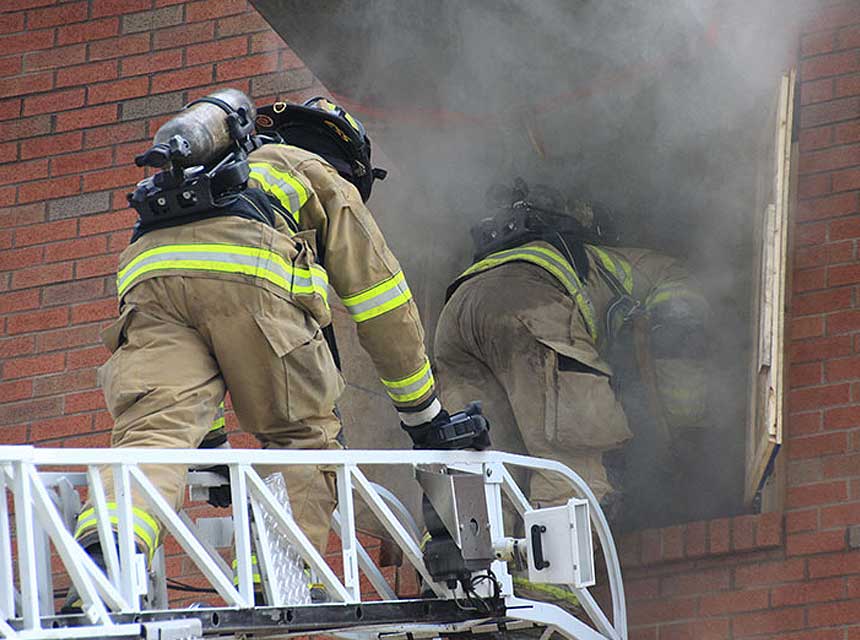
By Dr. Jamie L. McAllister and Brian McAllister
A research project was conducted to evaluate the current approaches utilized in the fire service for proficiency training and continuing education (CE). Approaches used by parallel professions (emergency medical providers, nurses, law enforcement officers, and teachers) were also assessed. Based on these findings, a CE model was developed. The study found that every State and all the Canadian Provinces have at least one Pro Board or IFSAC Accredited Agency, however only 20 states (and no Canadian provinces) have a continuing education program for recurrent training, recertification, or license renewal. These continuing education programs, along with the National Fire Protection Association (NFPA) standards, most commonly required recurrent training on an annual basis. Considering all the professions and average hourly requirements, a 24-hour per year certification “renewal” model was recommended for firefighters. The continuing education program would include a minimum of one live-fire training per year, as well as methods to evaluate all associated job performance requirements. A variety of methods is recommended to support completion of continuing education requirements including face-to-face and online training.
RELATED
CONTINUING EDUCATION FOR FIREFIGHTERS
Firefighters and Higher Education: Enhancing an Individual, or Checking a Box?
Higher Education = Better Skills, Better Future
Introduction
The issue of continuing education (CE) and implementation of appropriate methods for maintenance of personnel knowledge and skills proficiency has been a long-standing challenge within the fire and emergency services (FEMS). Advances in fire behavior research have led to changes in firefighting tactics and technologies. These advancements in fire science reveal the critical importance of CE in the fire service. CE is not limited to maintenance of initial skills and core competencies. Rather, CE is also necessary to ensure that firefighters are current with changes in suppression and ventilation techniques, building construction, fire dynamics, personal protective equipment, and firefighter health and safety, amongst other things.
Emergency service providers generally recognize the need to ensure that personnel are appropriately trained and fluent in the state-of-the-art in their discipline(s), however, ensuring this need is fulfilled is often met with staffing, time, and financial restrictions. Because of these obstacles, the impact of which vary across different departmental models (e.g. career, volunteer, county, city, etc.) only federally mandated requirements, such as annual hazardous materials, respiratory protection, and infectious disease training, have been uniformly implemented by fire departments. Thus, there is a lack of consistency in frequency, hourly requirements, and training content in the handful of CE programs that go beyond these federally mandated requirements. As such, there is a need to determine if CE should be more systematically implemented across the fire service, as is currently done when assessing initial knowledge and skills proficiency.
Research Objectives and Methodology
The research objective was to evaluate the current approaches utilized for proficiency training and CE across the U.S. and Canada in the fire service as well as parallel professions. A secondary objective of this research was to develop a CE model based upon these current approaches. Current practice was evaluated by reviewing the NFPA Pro-Qual and Training standards to identify those standards with CE requirements and the required cycle for CE. Additionally, extensive online research was performed to determine which States and Provinces currently have CE requirements in place and to identify the details of those requirements. A second literature review was conducted to identify CE methods utilized in parallel professions, e.g. emergency medical, nursing, law enforcement, and teaching. These methods were assessed to determine if they could be applied in programs for fire service knowledge and skills proficiency. Resources such as the National Registry of Emergency Medical Technicians, AAACEUs, Lipcott Nursing Center, Target Solutions, Police One Academy, and the National Board for Professional Teaching Standards, were utilized. Additionally, a survey was conducted to determine the most prevalent frequency, hourly requirements, and methods for CE utilized by the fire service and parallel professions. Using this data, a recommended CE model was developed based upon the most prevalent frequency, duration, and implementation methods currently utilized within the fire service and parallel professions, in coordination with requirements present in the NFPA Pro-Qual and Training Standards.
Read the entirety of this report as a PDF.
Fire and Emergency Service Personnel Knowledge and Skills Proficiency
Dr. Jamie L. McAllister is the Founder and Technical Director of FireTox, LLC. Dr. McAllister is also an adjunct professor in the Fire Protection Engineering Graduate Program at the University of Maryland, College Park. Dr. McAllister previously taught fire investigation and mathematics at University of Maryland, University College, fire dynamics and research statistics at Eastern Kentucky University, and fire investigation and fire modeling at the National Fire Academy. Dr. McAllister was also part of the technical committee responsible for the development of fire science courses at the University of Maryland, University College and the National Fire Academy.
Brian McAllister is a co-owner and researcher at FireTox, LLC. He has been involved in the field of fire science since joining the volunteer fire service in 1989. His passion for firefighting led him into the career fire service in 1998 as a federal firefighter at the Marine Corp Logistics Base in Albany, Georgia. Mr. McAllister was subsequently hired by the District of Columbia fire department in Washington D.C. in 2001, where he currently holds the rank of captain.

